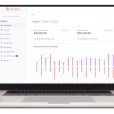US markets on Friday closed slightly lower but finished to week higher. We have likely seen the worst of the selling for now as the US has kicked the debt ceiling issues out to December. Investors will likely wait for the reporting to kick off before buying too much more into this market. Fastenal will kick things off tomorrow night then the large US banks will follow on Wednesday Thursday and Friday night. This reporting will be the next catalyst for markets.
There seems to be a lot of chatter still around inflation, as Crude continues to jump and supply chain issues are yet to be resolved. This will continue to have investors worried about interest rates, although the chances of interest rates rising with this type of inflation is low. If consumer prices continue to go up it will slow economic growth as they are only going up from supply issues. So a movement in interest rates will just make things worse. Both the FED and RBA has been clear that rates are not likely to go up any time soon.
Job data was weak in the US on Friday which also adds to the view that rates are not likely to go up any time soon. The next FED announcement isn’t until early November, but investors will continue to speculate in interest rates movements and the next moves from central banks.
We are also coming into the period where companies’ payout their August/September dividends which means many Aussie investors will see cash hit their investing accounts this month. Often this cash is put back into the market which can also help with some upward momentum.
Daily virus numbers worldwide are still declining. Locally NSW numbers are trending down, but Vic numbers are still jumping. Vaccination numbers continue to climb as we are set to reach national targets in November. Nationwide we are at 82.2% first dose. NSW has hit 90% first does and has now surpassed the first target of 70% second does which is seeing restriction lifter today. Vic is at 85.53% first dose and 58% second dose. At this stage, Vic is still playing some catchup but is likely to hit 70% second dose by the end of this month. There is a lot of positive talk around ending lockdowns and reopening the economy.
Australian Outlook
The XJO is expected to open flat this morning, following both a small pull back in the U.S on Friday and their flat futures.
Strength returned to the market late last week following the extension of the debt ceiling deadline to December. It did however trip due to worse than expected job data that was released Friday night during the U.S session. With little to go on, our market will look to U.S futures during our session for further direction.
Technically, both our market and the U.S have failed to break the downtrend line. We have held 7,200 so far, putting us in a short-term descending triangle. Eventually one of these lines must win. There is also clear resistance at 7,400 which is bolstered by the short-term downtrend line coming in at similar levels. It is unlikely we make much heady way or fall beyond 7,200 with out clear direction from the U.S first.
This week the U.S starts their reporting season which will push and pull markets as investors weigh up balance sheets. We will also see some further jobs data, as well as CPI from the U.S on Wednesday. On Thursday we will see un update on our own employment data, as well Chinese CPI data. To finish the week, we will see retail sales numbers from the U.S.
US Markets
US shares ticked lower on Friday, with the major indices ending their run of three consecutive bullish closes. We saw the release of US unemployment data for September on Friday, with US unemployment coming in better than expected; however, nonfarm payrolls came in worse than expected. Commentary around the jobs reporting suggested that it was worse than expected overall, which may have held US markets back.
US markets are starting an earnings reporting season this week so we could see some large movement in relation to this. Earnings reporting tends to be a more bullish period for US shares and expectations for these results have been lowered a fair degree. Nine of the eleven sector groups of the S&P 500 closed lower, with only Energy and Financials closing higher. Real Estate stocks fared the worst and most other sectors were only slightly lower.
- US markets turn red at close as Netflix disappoints on subscriber growth - January 21, 2022
- Tech gets hammered as investors move back to Value - December 17, 2021
- Why are Aussie investors flocking to US markets? - November 18, 2021













Leave a Comment
You must be logged in to post a comment.